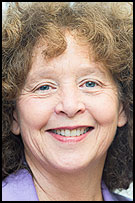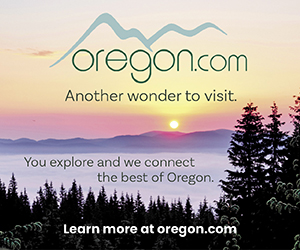Maryalice Russell: Striving to adapt amid uncertainty
The COVID-19 crisis has changed our world in ways that we could not have imagined — even six weeks ago.
As school administrators, our hearts are with our students, staff and community as we all come to terms with what the crisis means to us. We miss seeing and interacting with our students and families, but we also worry about their well-being.
For our students, there is a realization that the sudden pause on in-class instruction means they aren't going to see their teachers and friends for a while. They have little or no visits with their friends and extended family outside their homes, so may be lonely.
Some of our students become particularly vulnerable when their usual routines and supports are not in place. They may be aware of, confused about and possibly frightened by what they see and hear in the daily flow of news.
Many of our families are struggling to work, in the absence of school and daycare. Many are struggling to make rent or pay their mortgage, put food on the table, and support their students’ learning at the same time.
Parents and caregivers may be facing pressures they’ve never faced before — a struggling economy, job uncertainty, child-care concerns and responsibility for keeping one’s family healthy and safe. But we are there to support them in whatever way we can.
Members of our staff are also juggling many demands, both professionally and personally. They have many questions about work expectations and how to support their students when face-to-face classroom instruction isn't possible.
Individually, they are worried, like you, about their own health and well-being and that of their loved ones. Many of them are also parents of students, and many have parents or other relatives especially vulnerable in this pandemic.
The COVID-19 crisis has created a level of anxiety for us all. In our current context, relationships and connections are critical.
Accordingly, our first effort as a district is to reach out to our students and families, so they know we are all in this together.
We have been planning for three scenarios: 1) On-site school as usual; 2) A hybrid of distance learning and in-person instruction, with a limited number of students on campus at any one time to ensure physical distancing, as per state and county health guidance; 3) Distance learning only.
Given these uncertain times, our planning will allow us the flexibility to pivot, based on COVID-19 conditions in the city, county and state. But based on the governor's Wednesday order, and currently state and county positive testing rates, we have decided to stick with option three for now. That will, we have decided, probably remain the case through the fall.
In addition, we will be delaying the start of fall classes until Sept. 14.
Our top priority is to provide a healthy and safe environment for students, families and staff. We are especially focused on vulnerable students, such as English language learners, students with disabilities, students in poverty, and food- or housing-insecure students.
We intend to provide continuity of educational opportunities for all students, but we recognize there will be some who need additional support.
We are also focusing on students in transition, say moving to 6th or 9th grade, who have yet to meet their teachers. We recognize the importance of establishing teacher-student relationships in case we end up in a distance only mode come fall.
Though we won’t always have the answers, please know that we have district teams working diligently to plan for all possible outcomes. Principals will be updating students and families regularly, as COVID-19 conditions change.
We ask our students and families to recognize that, due to conditions in the community, our planning must be fluid. So answers to questions given one week may change the next, based on the ebb and flow of the virus.
I wish our students, families, staff members and home community safety, good health and wellness as we move through this crisis. We may be physically apart, but never more together.
Each school has developed an operational blueprint for eventual reopening that addresses public health protocols, equity, instruction and family and community engagement. Prior to implementation, a plan incorporating those blueprints must be submitted to the school board, local public health authority and Oregon Department of Education for their consideration.
Among other things, our master blueprint requires planning for physical distancing, face mask requirements and other elements of communicable disease management. It also calls for creation of cohorts of students prepared to learn together in groups, on a masked basis.
Developing operational guidelines for eventual return of students and teachers has meant converting several water fountains to bottle fill stations, reducing the number of desks in classrooms and modifying schedules to lower class sizes. State guidance for school opening in the 2020-21 school year was developed by the Oregon Department of Education in consultation with the Oregon Health Authority.
Certain public health protocols are required to reduce exposure to COVID-19.
They include allowing at least 35 square feet per student in determining classroom capacity, supporting physical distancing in all daily activities and maintaining at least six feet of physical distance to the maximum extent possible. That means revising schedules to limit the number of students on campus and in given classrooms at any given time, something that is still in development.
In addition, face coverings will be required for all students and staff at all levels, K-12, when physical reopening is deemed once-again feasible.
Unlike last spring’s emergency closure, the 2020-21 expectation for distance learning has been aligned to a set of established standards. The program will feature the same instruction and student engagement activities that would be delivered in brick and mortar classrooms.
Schools will have plans in place to ensure student engagement, align curriculum with grade-level standards and provide students with social and emotional support.
Distance learning will include teacher-facilitated learning, applied learning and breaks for nutrition and wellness. Attendance will be taken daily, and grades will be earned and issued.
In addition to school counselors and psychologists, partners from Yamhill County Health, the Yamhill Coordinated Care Organization and Lutheran Family Services will be available to provide mental, social and emotional services to families. Any family may contact any of these agencies for assistance.
Come fall, district team members will make personal calls to every student and family to offer mental and social/emotional support.
The district has continued providing meal services since the emergency closure of schools began March 16. Every elementary school serves its attendees grab-and-go meals, including secondary students in the catchment area.
Grab-and-go meals will continue to be available at every elementary school, and at designated bus delivery sites. Once back in school, students will eat in classrooms rather than cafeterias.
A Chromebook will be provided to each student to meet distance learning requirements. Students who received a Chromebook last year were allowed to keep it over the summer.
Some families do not have internet service. Those families have been provided with hotspot devices fostering internet connectivity.
We will offer parent workshops too. Formats will include on-site with physical distancing, outdoor locations and remote interactivity.
Coming together as a community to support our teachers, students and families in the teaching and learning process will, we believe, result in positive outcomes for children.










Comments